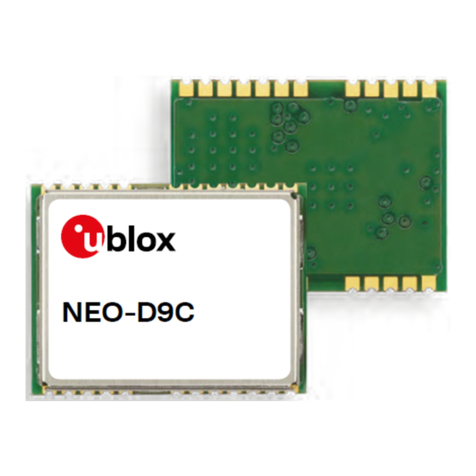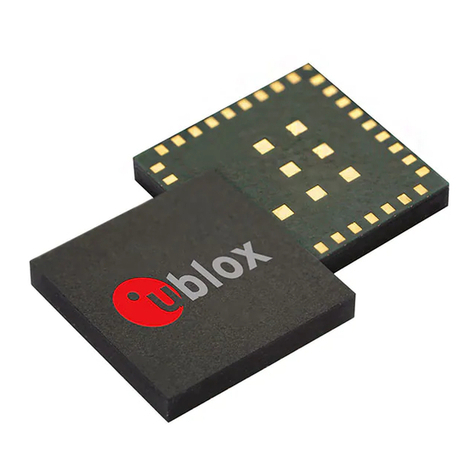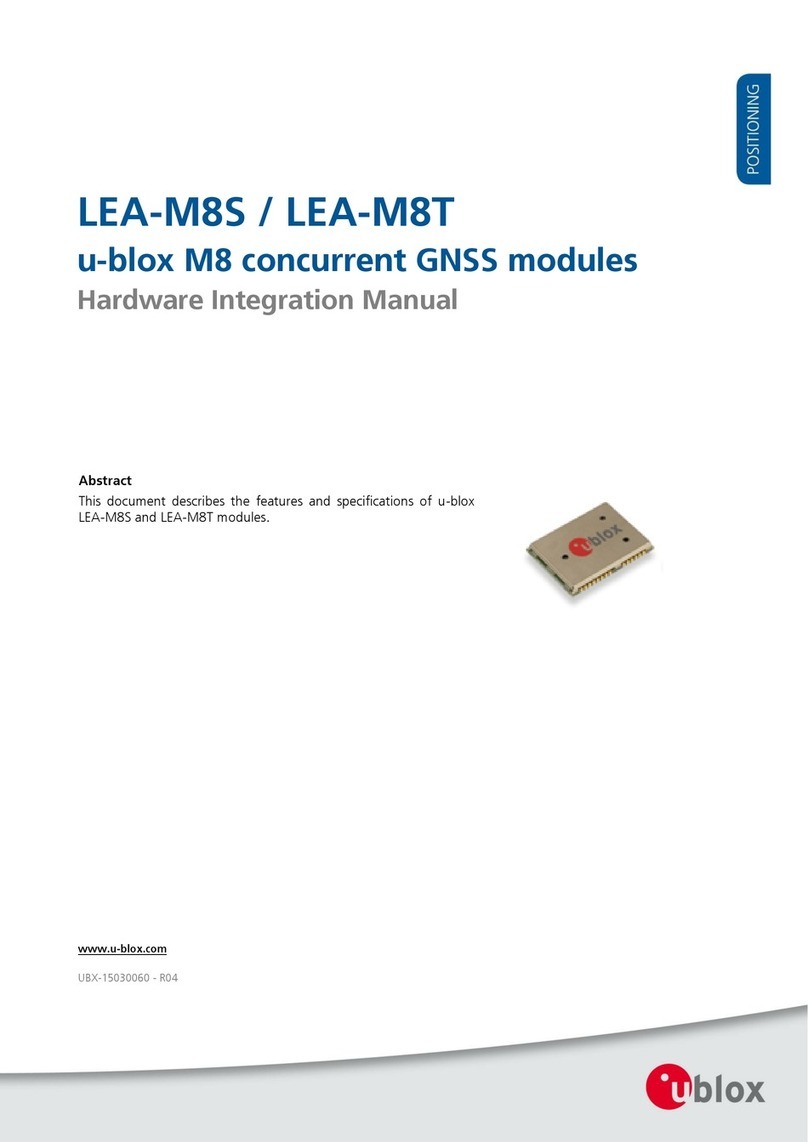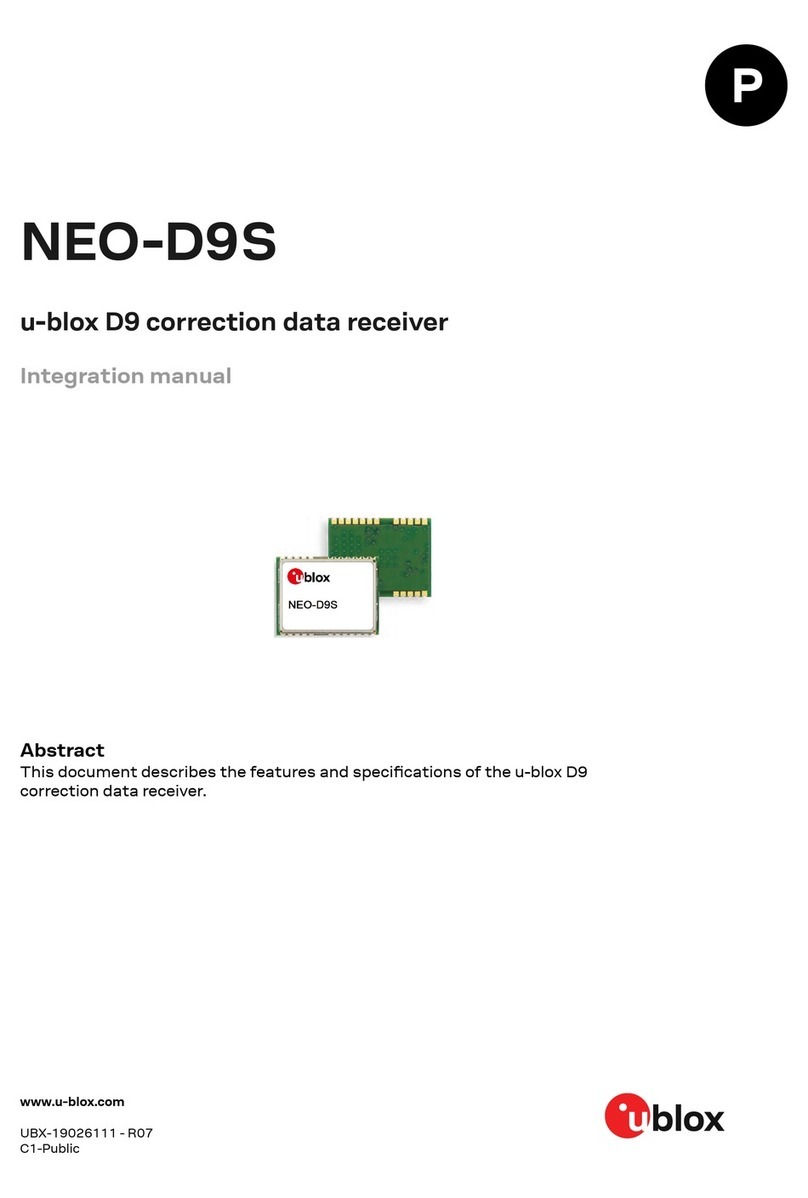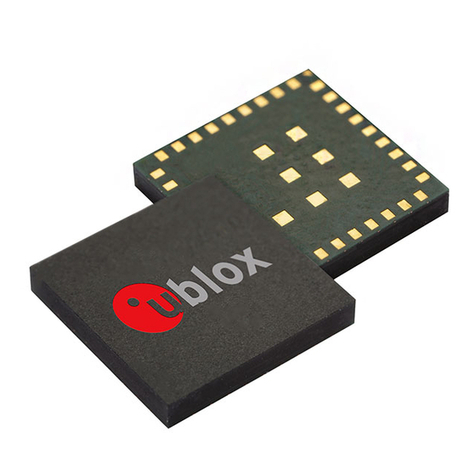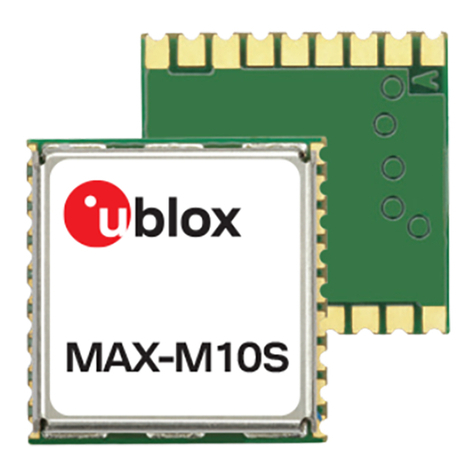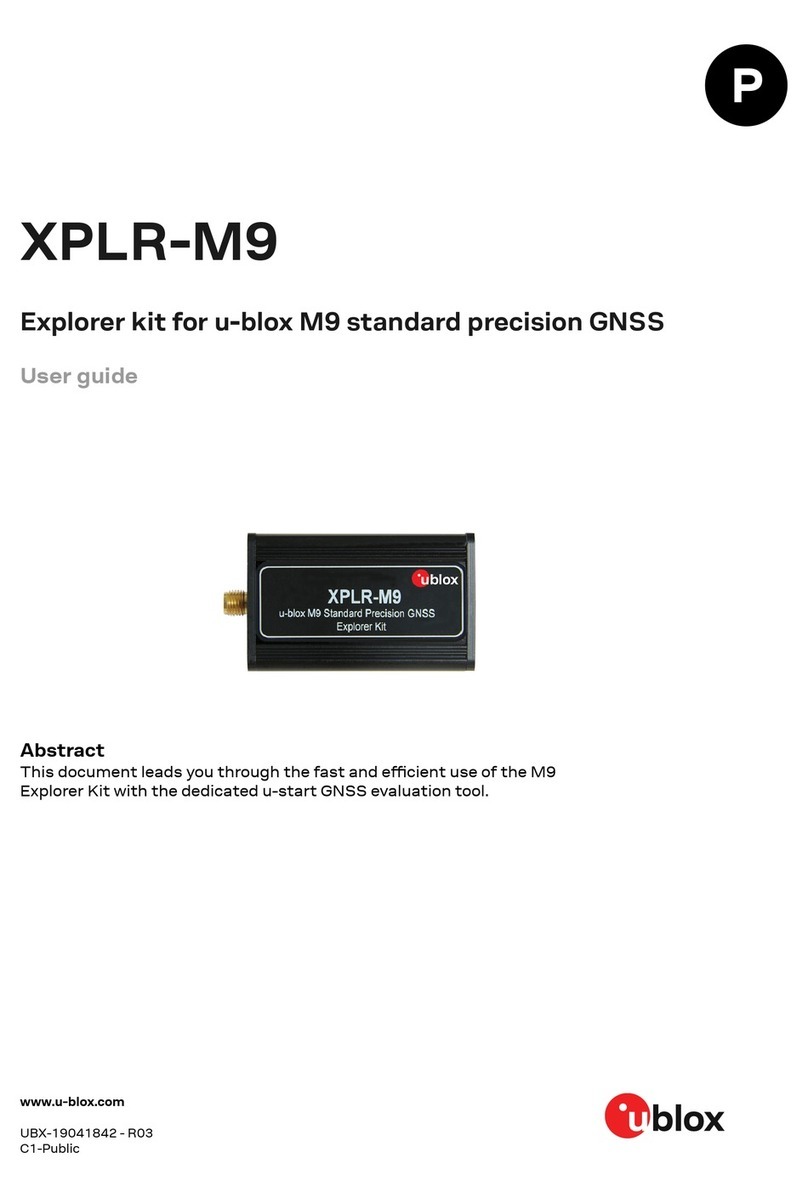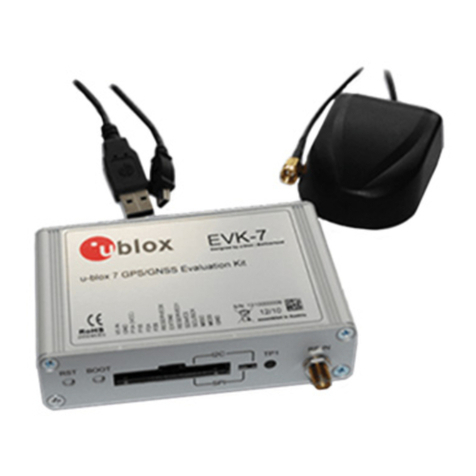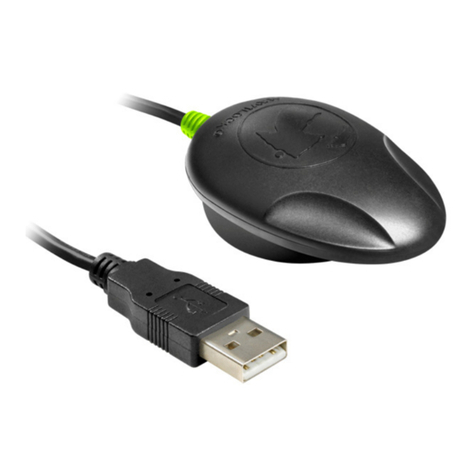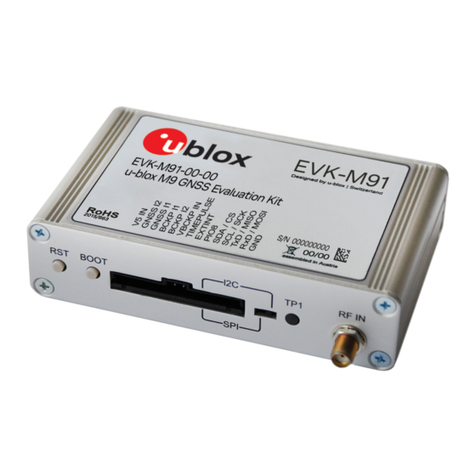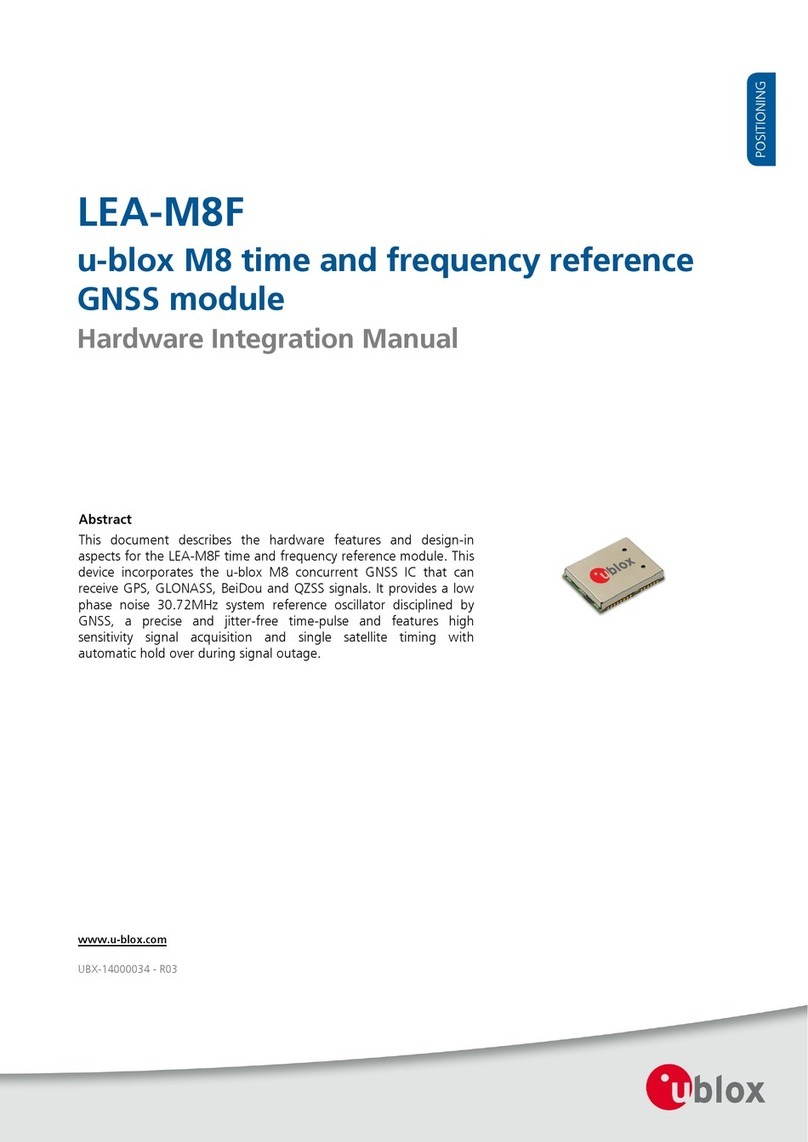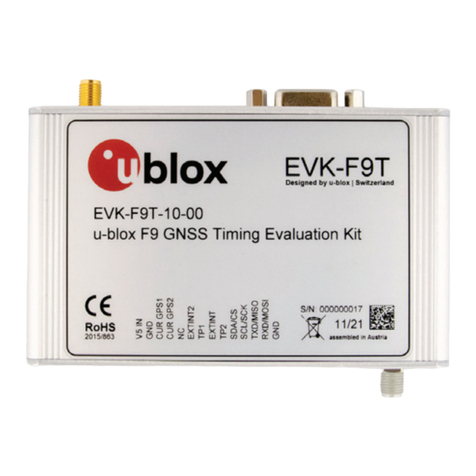
ZED-F9R-Integration manual
3.6.1 Antenna voltage control - ANT_OFF........................................................................................45
3.6.2 Antenna short detection - ANT_SHORT_N............................................................................ 46
3.6.3 Antenna short detection auto recovery..................................................................................46
3.6.4 Antenna open circuit detection - ANT_DETECT................................................................... 47
3.7 Multiple GNSS assistance (MGA)..................................................................................................... 47
3.7.1 Authorization................................................................................................................................ 48
3.7.2 Multiple servers............................................................................................................................48
3.7.3 Preserving information during power-off................................................................................48
3.7.4 AssistNow Online......................................................................................................................... 48
3.8 Save-on-shutdown feature................................................................................................................. 52
3.9 Clocks and time.....................................................................................................................................53
3.9.1 Receiver local time.......................................................................................................................53
3.9.2 Navigation epochs....................................................................................................................... 53
3.9.3 iTOW timestamps........................................................................................................................54
3.9.4 GNSS times................................................................................................................................... 54
3.9.5 Time validity.................................................................................................................................. 54
3.9.6 UTC representation..................................................................................................................... 55
3.9.7 Leap seconds................................................................................................................................ 56
3.9.8 Real-time clock............................................................................................................................. 56
3.9.9 Date.................................................................................................................................................56
3.9.10 Time pulse...................................................................................................................................57
3.9.11 Timemark.................................................................................................................................... 60
3.10 Security.................................................................................................................................................61
3.10.1 Spoofing detection / monitoring............................................................................................ 61
3.10.2 Jamming/interference indicator............................................................................................ 62
3.10.3 GNSS receiver integrity............................................................................................................63
3.11 u-blox protocol feature descriptions.............................................................................................. 63
3.11.1 Broadcast navigation data...................................................................................................... 63
3.12 Forcing a receiver reset.....................................................................................................................71
3.13 Firmware upload................................................................................................................................. 71
4 Design..................................................................................................................................... 72
4.1 Pin assignment......................................................................................................................................72
4.2 Power supply..........................................................................................................................................74
4.2.1 VCC: Main supply voltage.......................................................................................................... 74
4.2.2 V_BCKP: Backup supply voltage............................................................................................... 74
4.2.3 ZED-F9R power supply...............................................................................................................75
4.3 ZED-F9R minimal design....................................................................................................................75
4.4 WT and DIR interface example..........................................................................................................76
4.5 Antenna...................................................................................................................................................77
4.5.1 Antenna bias................................................................................................................................. 79
4.6 EOS/ESD precautions.......................................................................................................................... 81
4.6.1 ESD protection measures.......................................................................................................... 81
4.6.2 EOS precautions...........................................................................................................................82
4.6.3 Safety precautions...................................................................................................................... 82
4.7 Electromagnetic interference on I/O lines.......................................................................................82
4.7.1 General notes on interference issues......................................................................................83
4.7.2 In-band interference mitigation................................................................................................83
4.7.3 Out-of-band interference........................................................................................................... 84
4.8 Layout......................................................................................................................................................84
4.8.1 Placement...................................................................................................................................... 84
UBX-20039643 - R01
Contents Page 4 of 105
C1-Public Advance information
